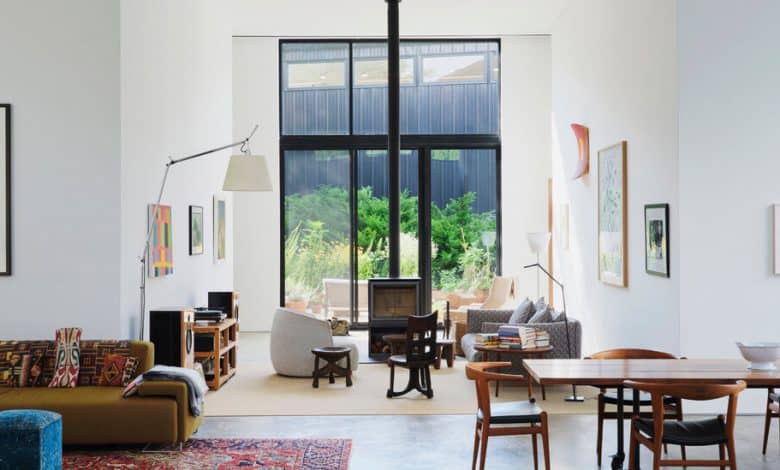How to Live Like an Artist

Over the years, the writers and editors of this magazine — myself among them — have been lucky enough to visit many visual artists’ homes and studios. One of the things I always find myself noticing is the art they choose to live with and work amid (and, as significantly, what they don’t). Many artists amass their collections through trades: The walls in their spaces are a biography of their friendships, their peers, their mentors and students. I’ve always thought it was a great sign of respect and admiration to hang another artist’s work in your home; much as writers are delighted to discover their book on a fellow writer’s shelf, so, too, must artists feel a special thrill of professional recognition to encounter their work in the wild. Living with something, after all, is the ultimate compliment.
What else can we see in an artist’s home? We can see their dedication to light, which is something that perhaps all artists value and certainly depend upon. We can get a glimpse of their spatial gifts, which are frequently unique and inspire counterintuitive compositions. But does an artist’s home reflect their own work? Usually, but often not directly; in the photographer Sheree Hovsepian and the multidisciplinary artist Rashid Johnson’s New York City townhouse, for example, you can find evidence of Hovsepian’s sense of shadow and subtlety, as well as Johnson’s restless intelligence, love of abstraction and unwillingness to be faithful to any single genre or medium. Here, midcentury Brazilian and American furniture sit amid African statuettes and masks, Abstract Expressionist canvases, contemporary sculpture and clashing textures that give the house an unusual tactility. In the abstract painters Marina Adams and Stanley Whitney’s Bridgehampton, N.Y., home, on the other hand, the rooms are spare, with a limited color palette; a surprise, perhaps, given their own ecstatically colorful works. But both their art and their home are defined by play as well as rigor, a mastery over shape and form.
Yet perhaps the most important thing we can see in an artist’s home is that it’s meant to please only themselves. Good art panders to no one. Ideally, good design shouldn’t, either. We may not be artists, but we can live like we are: We can remember that idiosyncrasy, and our unabashed embrace of it, is the true way to live well.
